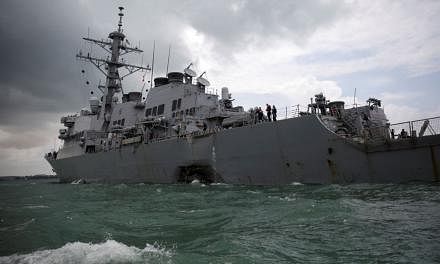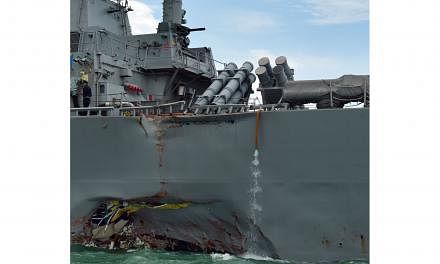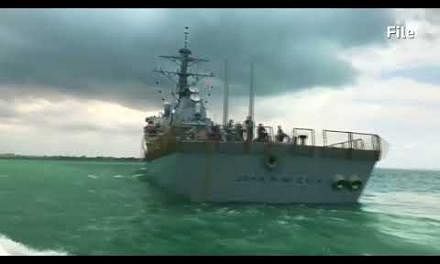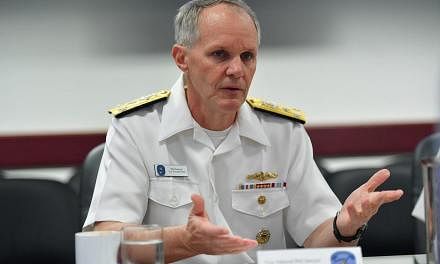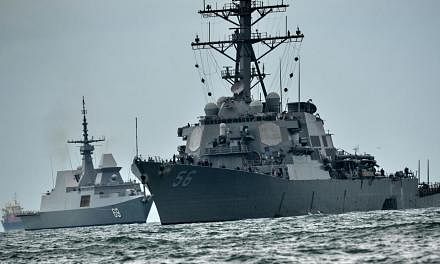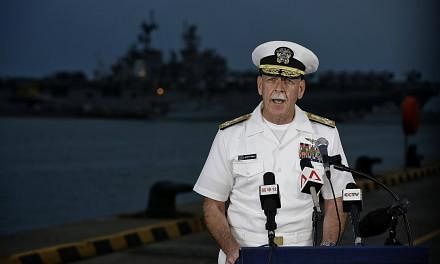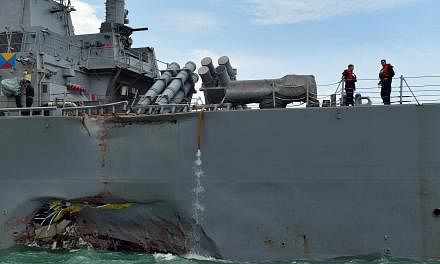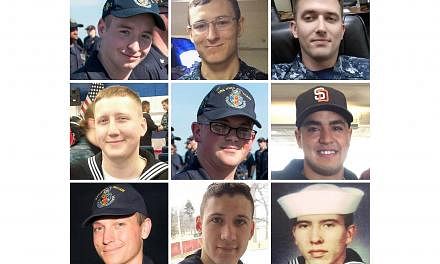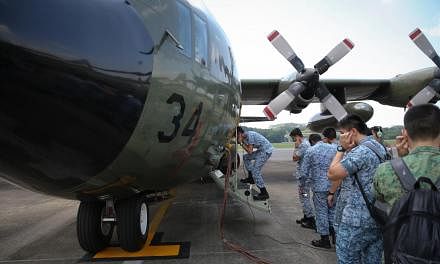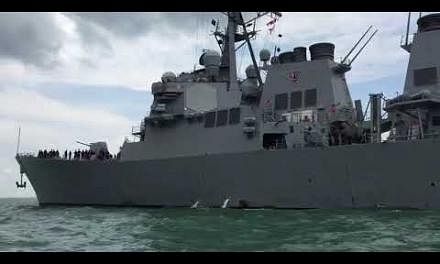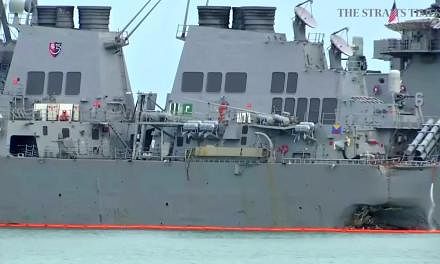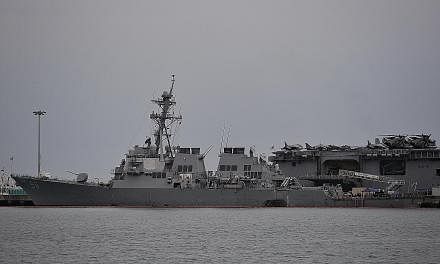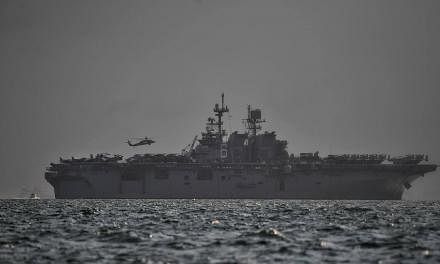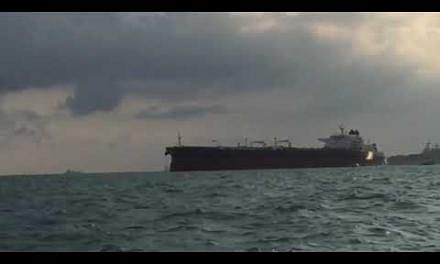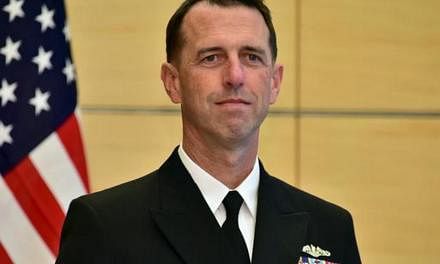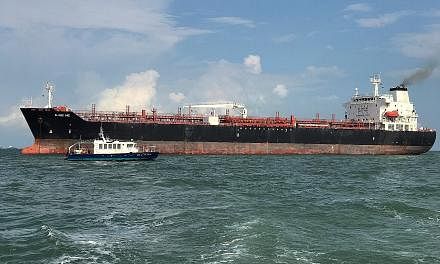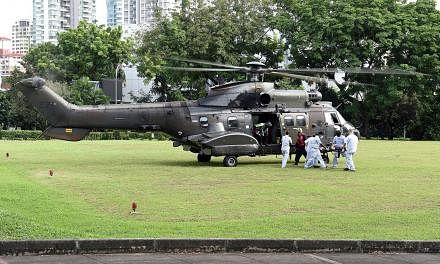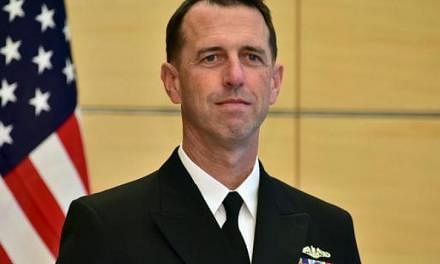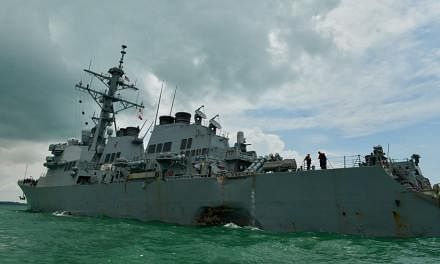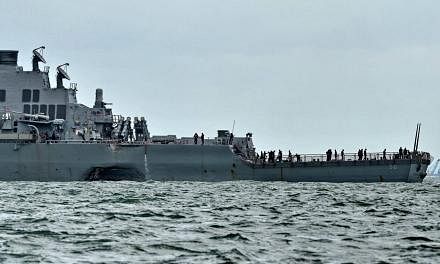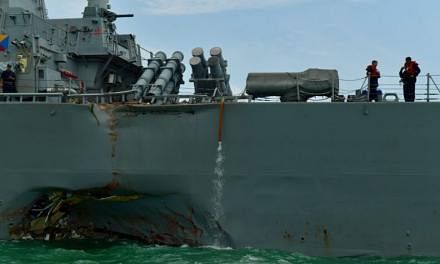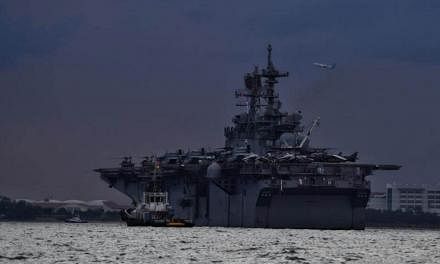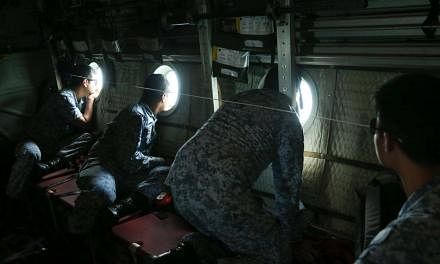WASHINGTON (WASHINGTON POST) - After the USS Fitzgerald collided with a giant container ship in mid-June, killing seven sailors, Admiral William F. Moran, vice chief of naval operations, said that the crew's lack of preparedness was partly to blame.
"Clearly at some point, the bridge team lost situational awareness," he said.
Two months later, another destroyer from the same fleet has collided with an oil tanker and 10 of its crew are still missing. The USS John S. McCain suffered significant damage to its hull, which flooded nearby compartments, including crew berthing, machinery and communications rooms, the 7th Fleet said in a statement.
On Monday (Aug 21), the US navy's chief ordered a "wide investigation" of the fleet.
The waters where the latest incident took place - the Singapore Strait, a 10-mile-wide maritime gantlet brimming with ships moving between the Indian Ocean and South China Sea - demand heightened precaution. If there is a systemic lack of preparedness in the fleet, then crossing through these waters, however peaceful, represent one of its biggest risks.
Captain Rahul Khanna, head of marine risk consulting at Allianz, a global insurance company, said the waters outside Singapore are particularly dense and hard to navigate, with a constant stream of ships waiting offshore to pick up loads and crisscrossing the passage after refueling.
In addition to being one of the busiest shipping areas in the world, he said, it's also one of the riskiest.
"It's a very dynamic environment. These are areas where lots of ships funnel through," said Khanna, who captained oil tankers for two years. "It requires the utmost level of situational awareness to pass through, and every sailor is aware of that."
According to Allianz statistics, more than three-quarters of all maritime incidents are attributable to human error. Collisions usually involve a combination of factors such as malfunctioning equipment and a breakdown in communication among the ship's officers, Khanna said.
"You need to be extra careful," Khanna said. "Your bridge team has to perform exceedingly well. They should be trained well enough to deal with this."

Other maritime risk experts said that while travelling through the Singapore Strait carries a higher risk of collision, such incidents are becoming less frequent, making the 7th Fleet's mishaps all the more remarkable.
"According to global statistics there is a reducing trend for collision at sea as a percentage of overall causes of total losses of vessels," said Nathan Hambrook-Skinner of Lloyd's of London. He cautioned, however, that as much as it might seem like it, drawing conclusions about the reasons behind Monday's collision would be premature until a full investigation was conducted.
Peter Roberts, director of Military Sciences at the Royal United Services Institute and a former officer in the Royal Navy, agreed that it was too early to tell whether the collisions involving the McCain and the Fitzgerald were the result of similar failures or just a coincidence.
"To have two in one summer is either amazingly bad luck, or there might be other factors that contributed to it," Roberts said. "Because these collisions are so rare and because the standards of seamanship are so high, it's difficult to see how these two things happened so quickly after each other."
Roberts questioned the notion that the relatively smaller and more agile Navy destroyer should have been able to rapidly change course and steer clear of the hulking oil tanker. Destroyers are fast and highly manoeuverable, he said, but that only would have helped if the McCain was far enough away.
"At close range it might well be very difficult to avoid a collision," he said. "The question is how the ships got in that close range."
The location of the damage on the McCain seemed to indicate that the ship had tried to manoeuvre out of the away, Roberts said.
"The fact that the ship is still running is a tribute to some quick thinking on the part of the crew," he said.

